Monthly Archives: April 2019
 Twenty years ago today, two teenaged gunmen walked into Columbine High School and opened fire, killing 13 people. Yesterday, I watched a news broadcast about the aftermath of those killings. One of the parents, commented on the fact that since Columbine, every time a school shooting occurs, it is compared to Columbine…often stated, “It was a Columbine-like shooting.” Those words had become synonymous with Columbine High School. Like a dark cloud, the stigma of that shooting comes back every time there is another shooting. Twenty years later, the parents and families of the 13 victims of Columbine want to change that…to remove the dark cloud, because if we continue to call shootings Columbine-like…it’s like they win. The grief and pain continue. They do not want their loved ones to always be associated with sadness and defeat. I think that is an amazing idea.
Twenty years ago today, two teenaged gunmen walked into Columbine High School and opened fire, killing 13 people. Yesterday, I watched a news broadcast about the aftermath of those killings. One of the parents, commented on the fact that since Columbine, every time a school shooting occurs, it is compared to Columbine…often stated, “It was a Columbine-like shooting.” Those words had become synonymous with Columbine High School. Like a dark cloud, the stigma of that shooting comes back every time there is another shooting. Twenty years later, the parents and families of the 13 victims of Columbine want to change that…to remove the dark cloud, because if we continue to call shootings Columbine-like…it’s like they win. The grief and pain continue. They do not want their loved ones to always be associated with sadness and defeat. I think that is an amazing idea.
One of the victims, Lauren Townsend loved animals. She volunteered at the local animal shelter, so her parents 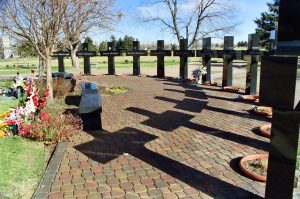 decided to remember her by setting up the Lauren Townsend Memorial Wildlife Fund. Cassie Bernall’s family started the Cassie Bernall Foundation. Their latest project is The Books for Classrooms program. Steven Curnow was a member of the Cornish American Heritage Society from an early age, and in fact he was their youngest member, so his family set up the Steven Curnow Memorial Foundation in support of the Cornish American Heritage Society. Several of the victims had planned to join the military after high school. They were made honorary veterans. Coach William “Dave” Sanders is credited with saving untold numbers of students as he ran into the cafeteria and told them to flee the building. Then he left to warn other students, sacrificing his own life for others. The softball field at Columbine has been named after him, and a scholarship program was set up in his honor. Each of the people who died that day was filled with promise. They were Rachel Scott, Daniel Rohrbough, Coach Dave Sanders, Kyle
decided to remember her by setting up the Lauren Townsend Memorial Wildlife Fund. Cassie Bernall’s family started the Cassie Bernall Foundation. Their latest project is The Books for Classrooms program. Steven Curnow was a member of the Cornish American Heritage Society from an early age, and in fact he was their youngest member, so his family set up the Steven Curnow Memorial Foundation in support of the Cornish American Heritage Society. Several of the victims had planned to join the military after high school. They were made honorary veterans. Coach William “Dave” Sanders is credited with saving untold numbers of students as he ran into the cafeteria and told them to flee the building. Then he left to warn other students, sacrificing his own life for others. The softball field at Columbine has been named after him, and a scholarship program was set up in his honor. Each of the people who died that day was filled with promise. They were Rachel Scott, Daniel Rohrbough, Coach Dave Sanders, Kyle  Velasquez, Steven Curnow, Cassie Bernall, Isaiah Shoels, Matthew Kechter, Lauren Townsend, John Tomlin, Kelly Fleming, Daniel Mauser, and Corey DePooter. Their families would like them to be remembered for their accomplishments and their dreams, rather than as victims. They would like the school to be remembered as a place of renewal, healing, and mostly of peace. They noted that Columbine means little doves… among other things. I rather prefer the Victorian meaning, which is resolved to win. I think that if the names of the killers are forever forgotten and never mentioned again; and if these lost ones are remembered for their winning spirit, their loving ways, and their kindness to others, then the right side wins.
Velasquez, Steven Curnow, Cassie Bernall, Isaiah Shoels, Matthew Kechter, Lauren Townsend, John Tomlin, Kelly Fleming, Daniel Mauser, and Corey DePooter. Their families would like them to be remembered for their accomplishments and their dreams, rather than as victims. They would like the school to be remembered as a place of renewal, healing, and mostly of peace. They noted that Columbine means little doves… among other things. I rather prefer the Victorian meaning, which is resolved to win. I think that if the names of the killers are forever forgotten and never mentioned again; and if these lost ones are remembered for their winning spirit, their loving ways, and their kindness to others, then the right side wins.
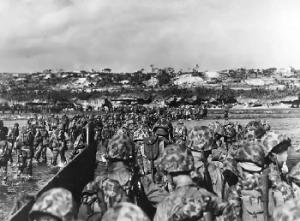 Every battle fought in a war is important, but some battles carried mush more weight, either in it’s strategic importance, or in it’s loss of life. Sometimes, a battle’s importance is due to both, as is the Battle of Okinawa, which was the largest and deadliest campaign in the Pacific Theater of World War II. The atomic bombings of Japan, which ended World War II in the Pacific Theater, were a direct result of battles undertaken on many key Pacific Ocean islands between the United States and its allies, and the Japanese forces. While these battles were bloody and deadly, costing many lives, they were nevertheless, of ultimate importance to the defeat of the Japanese Empire. The Battle of Okinawa, codenamed Operation Iceberg was the deadliest of the war.
Every battle fought in a war is important, but some battles carried mush more weight, either in it’s strategic importance, or in it’s loss of life. Sometimes, a battle’s importance is due to both, as is the Battle of Okinawa, which was the largest and deadliest campaign in the Pacific Theater of World War II. The atomic bombings of Japan, which ended World War II in the Pacific Theater, were a direct result of battles undertaken on many key Pacific Ocean islands between the United States and its allies, and the Japanese forces. While these battles were bloody and deadly, costing many lives, they were nevertheless, of ultimate importance to the defeat of the Japanese Empire. The Battle of Okinawa, codenamed Operation Iceberg was the deadliest of the war.
Following the December 7, 1941 Japanese attack on Pearl Harbor, Hawaii, the United States officially entered World War II. The United States had a score to settle, but at the onset things did not go well for the US. The Japanese kept expanding and conquering in the Pacific and seemed unstoppable. The United States and its allies rallied and were able to start gaining ground at the Battle of Midway in 1942, but it was the Battle of Okinawa that really changed things.
Military leadership realized that, because the Japanese controlled a vast area of the Pacific, taking over the many islands dotting the Pacific would be crucial to victory. They needed bases from which to launch the various operations against Japan, and these islands were perfect for it. American soldiers, sailors, and marines 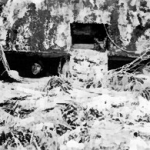 fought over the next three years, on little islands in places many Americans had never heard of…places like Tarawa, Midway, Saipan, Luzon, and Cape Gloucester. Each battle, brought with it significant bloodshed. The Japanese fought ruthlessly to the end in all cases, refusing to surrender even in the face of obvious defeat. They would rather die than give up, and many did. It was the samurai code of Bushido, in which Japanese soldiers fought to the death because they believed in death before defeat. Slowly, the Allies began to push the Japanese off occupied islands and Japan started to run out of ships, planes, and soldiers as the war continued.
fought over the next three years, on little islands in places many Americans had never heard of…places like Tarawa, Midway, Saipan, Luzon, and Cape Gloucester. Each battle, brought with it significant bloodshed. The Japanese fought ruthlessly to the end in all cases, refusing to surrender even in the face of obvious defeat. They would rather die than give up, and many did. It was the samurai code of Bushido, in which Japanese soldiers fought to the death because they believed in death before defeat. Slowly, the Allies began to push the Japanese off occupied islands and Japan started to run out of ships, planes, and soldiers as the war continued.
As 1944 turned into 1945, the Japanese were pushed back onto what they considered their “home” territory on the Ryukyu Islands, one of which was Okinawa. This island was crucial to the American war strategy, because from there, they could successfully launch bombing raids on the Japanese homeland. On March 24, 1945 the US Navy launched artillery bombings and air raids on the island to weaken the forces located there. Eight days later, hundreds of thousands of soldiers landed on Okinawa’s beaches in what was called Operation Iceberg. Their mission was to capturing or destroy the island’s air bases. The original landing had 287,000 US troops versus 130,000 Japanese soldiers.
The fighting continued for two and a half months. The American soldiers fought in four critical areas of the island with specific strategies…take the eastern coast of the island, followed by the northern part, then take the  outlying islands surrounding Okinawa, and finally defeat the embedded Japanese troops. It all sounded pretty straightforward, but this battle was different. In this battle, the Japanese didn’t engage their enemies right on the beach, like they had in other battles. At Okinawa, they fell back into the jungles of the island to gain what little advantage they could as a defensive force. The Japanese used caves, pillboxes…fortified positions, and the jungle to their advantage. They also resumed a deadly tactic on the seas…kamikaze attacks. Brave pilots loaded their planes with high explosives and crashed into ships, destroying several, including their attached aircraft. Nevertheless, eventually the Allies won and Okinawa still houses an American base to this day.
outlying islands surrounding Okinawa, and finally defeat the embedded Japanese troops. It all sounded pretty straightforward, but this battle was different. In this battle, the Japanese didn’t engage their enemies right on the beach, like they had in other battles. At Okinawa, they fell back into the jungles of the island to gain what little advantage they could as a defensive force. The Japanese used caves, pillboxes…fortified positions, and the jungle to their advantage. They also resumed a deadly tactic on the seas…kamikaze attacks. Brave pilots loaded their planes with high explosives and crashed into ships, destroying several, including their attached aircraft. Nevertheless, eventually the Allies won and Okinawa still houses an American base to this day.
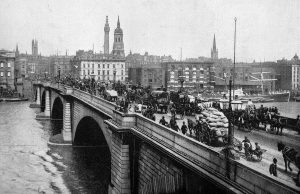
 They say that money can buy you just about anything…if you have enough of it. I suppose that in the area of material things, that might be true. Nevertheless, sometimes I wonder about the purchases made when people have money. Some purchases might be an interesting novelty, and might even have a purpose in the end, but they just seem like a rather extravagant, and yes, eccentric purchase. Nevertheless, for a price, some of the strangest purchases have been made.
They say that money can buy you just about anything…if you have enough of it. I suppose that in the area of material things, that might be true. Nevertheless, sometimes I wonder about the purchases made when people have money. Some purchases might be an interesting novelty, and might even have a purpose in the end, but they just seem like a rather extravagant, and yes, eccentric purchase. Nevertheless, for a price, some of the strangest purchases have been made.
I don’t know if Robert P. McCulloch was an eccentric millionaire, or if he just liked what he liked, but on April 18, 1968, he made a deal to buy the London Bridge, for 1 million dollars. He then had it disassembled from it’s former location spanning the River Thames in London, England, and reassembled in Lake Havasu City, Arizona. As the bridge was disassembled, each piece was numbered to aid in the re-assembly project. Then it was transported to Arizona to be re-assembled over the Colorado River, connecting an island there to the main part of Lake Havasu City. The bridge was originally built in the 1830s. The move was quite the undertaking.
Apparently, McCulloch was searching for a unique attraction for his city. His search eventually took him to London. By the early 1960s it was apparent that John Rennie’s 1831 “New” London Bridge was gradually sinking into the River Thames and the City of London Corporation decided that a new bridge was needed. Still, the bridge was a historic landmark, so rather than demolish the existing bridge, they decided to auction the historic landmark. I guess McCulloch wasn’t the only one with strange ideas. The Arizona bridge is a reinforced concrete structure that is covered in the original masonry of the 1830s bridge. To accomplish an exact duplicate, McCulloch had the exterior granite blocks from the original bridge numbered and transported to America to construct the present bridge in Lake Havasu City, to adorn a planned community he established in 1964 on the shore of Lake Havasu. The bridge was completed in 1971, complete with a canal, and it links an island in the Colorado River with the main part of Lake Havasu City.
Probably the most amazing thing about this is that Lake Havasu City can actually claim that they have the 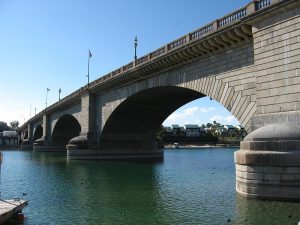
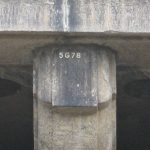 London Bridge there. Many people have made jokes about the intelligence of buyers, saying that if you’ll buy that, they have some ocean front property or even a bridge to sell you in Arizona. Well, I wouldn’t go for the ocean front property, which as we all know, doesn’t exist in Arizona, but the bridge is somewhat believable, although I doubt if this bridge is for sale, and if it was, I don’t know many people who could afford it. Nevertheless, it is a very unique landmark, and a very strange purchase, indeed.
London Bridge there. Many people have made jokes about the intelligence of buyers, saying that if you’ll buy that, they have some ocean front property or even a bridge to sell you in Arizona. Well, I wouldn’t go for the ocean front property, which as we all know, doesn’t exist in Arizona, but the bridge is somewhat believable, although I doubt if this bridge is for sale, and if it was, I don’t know many people who could afford it. Nevertheless, it is a very unique landmark, and a very strange purchase, indeed.
 Sometimes, you meet the love of your life the second time around. That’s how it was for my sister-in-law, Jennifer Parmely when she met her other half, Brian Cratty. These two are so much alike that they practically finish each other’s sentences. They have the same goals and they are going in the same direction with their lives. They have been a blessing in each other’s lives, and it is a sweet thing to watch.
Sometimes, you meet the love of your life the second time around. That’s how it was for my sister-in-law, Jennifer Parmely when she met her other half, Brian Cratty. These two are so much alike that they practically finish each other’s sentences. They have the same goals and they are going in the same direction with their lives. They have been a blessing in each other’s lives, and it is a sweet thing to watch.
Brian is rather a quiet guy, with a kind and loving spirit. I think he is most at home seated on his bicycle, weaving back an forth over the mountain trails. Brian and  Jennifer have a friend who owned a cabin on Casper Mountain, and then moved away. While he was gone, he asked them to keep an eye on his cabin, and in exchange, they could use it whenever they wanted. They jumped at the chance, and when their friend decided to sell the cabin, he offered it to them, and they were delighted to buy it. Anyone who has owned a cabin on the mountains, know that there is always this or that improvement to do, and so Brian and Jennifer have been doing lots of updates to it so that they and their family can enjoy the beautiful scenery of Casper Mountain. Since they bought the cabin, it is their home away from home…when they aren’t traveling, that is.
Jennifer have a friend who owned a cabin on Casper Mountain, and then moved away. While he was gone, he asked them to keep an eye on his cabin, and in exchange, they could use it whenever they wanted. They jumped at the chance, and when their friend decided to sell the cabin, he offered it to them, and they were delighted to buy it. Anyone who has owned a cabin on the mountains, know that there is always this or that improvement to do, and so Brian and Jennifer have been doing lots of updates to it so that they and their family can enjoy the beautiful scenery of Casper Mountain. Since they bought the cabin, it is their home away from home…when they aren’t traveling, that is.  Brian and Jennifer love to travel to areas of the United States where they can find new trails to hike and bike…as well as seeing the local sights.
Brian and Jennifer love to travel to areas of the United States where they can find new trails to hike and bike…as well as seeing the local sights.
Brian is a licensed pilot, but I don’t know how much flying he does these days. I’m sure it is enough to keep his license in place. He was a pilot for the Wyoming Medical Center until his retirement from there, but as any pilot would say, flying is in your blood, and you fly every chance you get. He has done corporate flying, but I think he just likes being retired for the most part. Today is Brian’s birthday. Happy birthday Brian!! Have a great day!! We love you!!
 Most of us think of Isaac Newton for things like Newtonian mechanics, Universal gravitation, Calculus, Newton’s laws of motion, Optics, Binomial series, Principa, and Newton’s method…ok, maybe not, I doubt if most of us know what most of that means, but we knew that he was a great mathematician. Newton was an English mathematician, but he was also a physicist, astronomer, theologian, and author who is widely recognized as one of the most influential scientists of all time, and a key figure in the scientific revolution.
Most of us think of Isaac Newton for things like Newtonian mechanics, Universal gravitation, Calculus, Newton’s laws of motion, Optics, Binomial series, Principa, and Newton’s method…ok, maybe not, I doubt if most of us know what most of that means, but we knew that he was a great mathematician. Newton was an English mathematician, but he was also a physicist, astronomer, theologian, and author who is widely recognized as one of the most influential scientists of all time, and a key figure in the scientific revolution.
Politically and personally, Newton was tied to the Whig party, an early version of the Republican Party. He served two brief terms as Member of Parliament for the University of Cambridge, in 1689-1690 and 1701-1702. He was noted by Cambridge diarist Abraham de la Pryme to have rebuked students who were frightening locals by claiming that a house was haunted. Newton moved to London to take up the post of warden of the Royal Mint in 1696, a position that he had obtained through the patronage of Charles Montagu, 1st Earl of Halifax, then Chancellor of the Exchequer. He took charge of England’s great recoining, trodden on the toes of Lord Lucas, Governor of the Tower, and secured the job of deputy comptroller of the temporary Chester branch for Edmond Halley. Newton became perhaps the best-known Master of the Mint upon the death of Thomas Neale in 1699. It was a position Newton held for the last 30 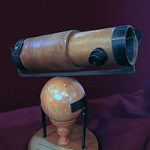 years of his life, and one of which he was very proud. These appointments were intended as type of figurehead position, but Newton took his job seriously. He retired from his Cambridge duties in 1701, and exercised his authority to reform the currency and punish clippers and counterfeiters. As Warden, and afterwards as Master, of the Royal Mint, Newton estimated that 20% of the coins taken in during the Great Recoinage of 1696 were counterfeit. Counterfeiting was high treason, which was punishable by the felon being hanged, drawn, and quartered. Despite that, it would be very difficult to convict even the most flagrant criminals. Nevertheless, Isaac Newton proved to be equal to the task.
years of his life, and one of which he was very proud. These appointments were intended as type of figurehead position, but Newton took his job seriously. He retired from his Cambridge duties in 1701, and exercised his authority to reform the currency and punish clippers and counterfeiters. As Warden, and afterwards as Master, of the Royal Mint, Newton estimated that 20% of the coins taken in during the Great Recoinage of 1696 were counterfeit. Counterfeiting was high treason, which was punishable by the felon being hanged, drawn, and quartered. Despite that, it would be very difficult to convict even the most flagrant criminals. Nevertheless, Isaac Newton proved to be equal to the task.
Disguised as a frequent patron of bars and taverns, he gathered much of that evidence himself. For all the barriers placed to prosecution, and separating the branches of government, English law still had ancient and formidable customs of authority. Newton had been made a justice of the peace in all the home counties. A draft letter regarding the matter is included in Newton’s personal first edition of Philosophiæ Naturalis Principia Mathematica, which he must have been amending at the time. Then he conducted more than 100 cross- examinations of witnesses, informers, and suspects between June 1698 and Christmas 1699. Newton successfully prosecuted 28 coiners. In April 1705, Queen Anne knighted Newton during a royal visit to Trinity College, Cambridge. The knighthood is likely to have been motivated by political considerations connected with the Parliamentary election in May 1705, rather than any recognition of Newton’s scientific work or services as Master of the Mint. Newton was the second scientist to be knighted, after Sir Francis Bacon. Newton died in his sleep in London on 20 March 1727. His body was buried in Westminster Abbey. A bachelor all his life, Newton had distributed much of his estate to relatives during his last years, and in the end, he died intestate. That seems, to me, a sad ending to an extraordinary life.
examinations of witnesses, informers, and suspects between June 1698 and Christmas 1699. Newton successfully prosecuted 28 coiners. In April 1705, Queen Anne knighted Newton during a royal visit to Trinity College, Cambridge. The knighthood is likely to have been motivated by political considerations connected with the Parliamentary election in May 1705, rather than any recognition of Newton’s scientific work or services as Master of the Mint. Newton was the second scientist to be knighted, after Sir Francis Bacon. Newton died in his sleep in London on 20 March 1727. His body was buried in Westminster Abbey. A bachelor all his life, Newton had distributed much of his estate to relatives during his last years, and in the end, he died intestate. That seems, to me, a sad ending to an extraordinary life.
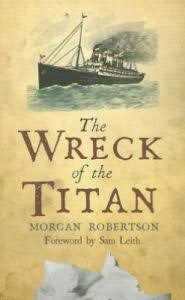 Fourteen years before the Titanic sank, Morgan Robertson wrote the novella Futility. It was about the large unsinkable ship “Titan” hitting an iceberg in the Northern Atlantic. Both the Titanic and the fictional Titan did not have enough lifeboats for the thousands of passengers on board. Both were short by about half. While the story behind the sinking of the Titan is somewhat different than the actual events of Titanic, the two are eerily similar, and with so many similarities, one has to wonder how this could have happened. It was like Robertson knew what was coming.
Fourteen years before the Titanic sank, Morgan Robertson wrote the novella Futility. It was about the large unsinkable ship “Titan” hitting an iceberg in the Northern Atlantic. Both the Titanic and the fictional Titan did not have enough lifeboats for the thousands of passengers on board. Both were short by about half. While the story behind the sinking of the Titan is somewhat different than the actual events of Titanic, the two are eerily similar, and with so many similarities, one has to wonder how this could have happened. It was like Robertson knew what was coming.
The story of the Titan puts the “unsinkable” ship sailing through the north Atlantic at breakneck speeds, because as we all know nothing could sink such a ship. Any breech of the holds would immediately close the water-tight doors, stopping the spillover into the other holds. As Titan sailed through the icy waters, they came into an area of fog, and still they did not slow down. Watchmen were posted, one of whom, John Rowland, tended to indulge in drink, since the love of his life left him, and now somehow was on the same ship, and she was married and had a child. While Rowland had been drinking, he was still the one to spot another ship…not that it made a difference. The titan continued full speed ahead, cutting the smaller vessel in half and killing all aboard. The ship still didn’t slow down, and the captain tried to buy the silence of his men, but Rowland would not be bought. As the trip continues, things just get worse. Before long, the ship hits an iceberg, and enough holds are breeched to seal Titan’s doom.
 The book, “The Wreck of the Titan,” originally called “Futility,” was so similar to the events of the Titanic, that it was almost eerie, and yet, it was enough different that you knew it was not the same event. It was simply a “fact is stranger than fiction” situation, and no one could possibly have anticipated that a ship with a very similar name, loaded with people and half the necessary lifeboats, would sail at breakneck speeds across the north Atlantic during a time when the icebergs were floating everywhere, just like the ship in the story, and that the ship…Titanic would suffer the same fate as the storybook ship, Titan suffered, fourteen years after the author dreamed up the story in his mind. And yet that is exactly what happened.
The book, “The Wreck of the Titan,” originally called “Futility,” was so similar to the events of the Titanic, that it was almost eerie, and yet, it was enough different that you knew it was not the same event. It was simply a “fact is stranger than fiction” situation, and no one could possibly have anticipated that a ship with a very similar name, loaded with people and half the necessary lifeboats, would sail at breakneck speeds across the north Atlantic during a time when the icebergs were floating everywhere, just like the ship in the story, and that the ship…Titanic would suffer the same fate as the storybook ship, Titan suffered, fourteen years after the author dreamed up the story in his mind. And yet that is exactly what happened.
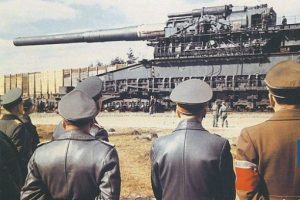 In 1934, Hitler had one problem…the French Maginot Line was the one thing standing in the way of Hitler invading France. In reality, it was the only thing that stood between Hitler and all of Western Europe. The French Maginot Line was a fortification running from the Rhine River to La Ferté consisting of concrete blockhouses, bunkers, and rail lines. The line was elaborate and extensive, and as rumors of its strength made their way to Germany, Hitler began to believe he’d need a miracle for his troops to break through it. Hitler believed that he needed the biggest gun in history.
In 1934, Hitler had one problem…the French Maginot Line was the one thing standing in the way of Hitler invading France. In reality, it was the only thing that stood between Hitler and all of Western Europe. The French Maginot Line was a fortification running from the Rhine River to La Ferté consisting of concrete blockhouses, bunkers, and rail lines. The line was elaborate and extensive, and as rumors of its strength made their way to Germany, Hitler began to believe he’d need a miracle for his troops to break through it. Hitler believed that he needed the biggest gun in history.
Engineers from Krupp, a steel company from Essen, were commissioned by the German High Command (OKH) to design a weapon powerful enough to break through the concrete fortifications that were nearing completion. The shells alone had to be strong enough to penetrate 22 feet of reinforced concrete and at least three feet of steel plating, meaning the weapon had to be massive. It had to be to hold and shoot shells large enough to bring such massive destruction. In order to meet the requirements that Hitler had set forth, Krupp engineer Erich Müller calculated that the weapon would have to be far bigger, and much more powerful than any weapon in existence. After much calculation, Müller put together the measurements for his goliath gun and presented the plan to the OKH.
Though Hitler made no formal commitment, the high command knew the design, known as the Schwerer Gustav, was their answer. With a caliber of 31 inches, able to fire a projectile that weighed more than 10 tons 30 miles away, the Schwerer Gustave was incredibly imposing. The barrel was over 100 feet long, longer than any gun barrel in existence, and the body of the gun was bigger than any tank to see battle so far. It was more like a small building than a gun. From the ground up it was almost four stories tall. It was over 150 feet long including the barrel, and weighed over 1,300 tons. To compare it to things of today, the Space Shuttle weighs 2,000 tons. This was no tiny tank. The shells alone, which had been designed with pure destruction in mind, were taller than two men, twice as wide as one, and weighed 20,000 pounds each. It took several men just to load one into the barrel. For the gun to move around, the body was built on two parallel sets of rail wheels, allowing it to travel across special tracks.
Ultimately, two of these weapons were ordered by the high command, the Schwerer Gustav and a smaller model they called “Dora.” However, the models weren’t ready by the time Hitler was, and the Germans were forced to invade France without them. Of course, they shouldn’t have been worried, as their troops far 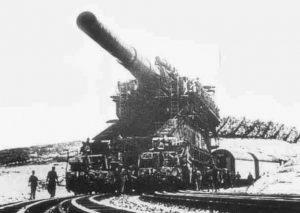 outnumbered the French’s static defenses. Even after the French quickly surrendered, Hitler still wanted to make use of his magnificent and destructive weapon. The siege of Sevastopol was the perfect opportunity. After five weeks of positioning the device, requiring 4,000 men, the weapon was ready. In five days, spanning between June 5 and June 17, the Schwerer Gustav fired 48 rounds, equaling 30,000 tons of ammunition. The barrel of the gun, which had already fired 250 rounds during testing, was worn out entirely. It took 500 men just to fire the gun, and after loading the oversized shells into the machine, they were exhausted. While the gun was daunting to anyone who saw it in action, it really wasn’t very practical.
outnumbered the French’s static defenses. Even after the French quickly surrendered, Hitler still wanted to make use of his magnificent and destructive weapon. The siege of Sevastopol was the perfect opportunity. After five weeks of positioning the device, requiring 4,000 men, the weapon was ready. In five days, spanning between June 5 and June 17, the Schwerer Gustav fired 48 rounds, equaling 30,000 tons of ammunition. The barrel of the gun, which had already fired 250 rounds during testing, was worn out entirely. It took 500 men just to fire the gun, and after loading the oversized shells into the machine, they were exhausted. While the gun was daunting to anyone who saw it in action, it really wasn’t very practical.
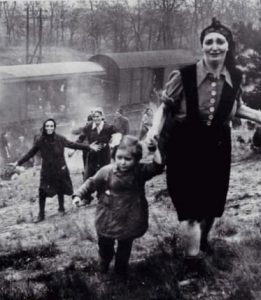 Friday, the 13th is not considered to be a lucky day…if you happen to be superstitious, but for almost 2500 Jewish people, as well as for Major Clarence L. Benjamin, Friday the 13th of April, 1945 would prove that Friday the 13th could be a very blessed day. While on a routine patrol a few miles northwest of Magdeburg, Benjamin and his unit came upon a railroad siding in a wooded ravine not far from the Elbe River. There, about 200 shabby looking civilians were sitting by the side of the road. Even in their shabby state, there was something immediately apparent about each one of these people, men and women, which drew immediate attention. These people were skeleton thin with starvation Their faces showed a sickness, and the way in which they stood…was like they were beaten and dejected, but there was something else. When they saw the Americans they began laughing in joy…if it could be called laughing. It was an outpouring of pure, near-hysterical relief. The reason, the unit soon found out was the railroad siding.
Friday, the 13th is not considered to be a lucky day…if you happen to be superstitious, but for almost 2500 Jewish people, as well as for Major Clarence L. Benjamin, Friday the 13th of April, 1945 would prove that Friday the 13th could be a very blessed day. While on a routine patrol a few miles northwest of Magdeburg, Benjamin and his unit came upon a railroad siding in a wooded ravine not far from the Elbe River. There, about 200 shabby looking civilians were sitting by the side of the road. Even in their shabby state, there was something immediately apparent about each one of these people, men and women, which drew immediate attention. These people were skeleton thin with starvation Their faces showed a sickness, and the way in which they stood…was like they were beaten and dejected, but there was something else. When they saw the Americans they began laughing in joy…if it could be called laughing. It was an outpouring of pure, near-hysterical relief. The reason, the unit soon found out was the railroad siding.
Standing silently on the tracks of the siding was a long string of grimy, ancient boxcars. On the banks by the tracks, trying to get some pitiful comfort from the thin April sun, sat a multitude of people of varying stages of misery. They sat motionless in despair. When they group sighted the Americans, a great stir went through this strange camp. Those who were able rushed toward the Major’s jeep and the two light tanks. On the hill to the left people were resting…some forever. About sixteen people died of starvation before food could be brought to the train. They simply couldn’t hold out any longer.
As the Major soothed the people, he eventually found some who spoke English, and their story came out. This had been, and still was, a horror train. This train which contained about 2,500 Jews, had a few days previously left the Bergen-Belsen death camp. Men, women and children, were all loaded into a few available railway cars, some passenger and some freight, but mostly the typical antiquated freight cars, called “40 and 8” cars. The term, from World War I, “40 and 8” meant that these cars would accommodate 40 men or 8 horses, but the cars were crammed with about 60 to 70 people, with standing room only for most of them. The cars were hot and it was hard to breathe. In all, the cars held about 2,500 Jews, far more than they should have.
The war was winding down, and the Nazis were trying to evacuate the concentration camps ahead of the Allied troops arrival. On April 10, 1945, three trains were sent from Bergen-Belsen with the purpose to move eastward from the Camp, to the Elbe River. They were told to reverse direction because of the rapidly advancing Russian Army. The train reversed direction and headed to Farsleben. There, they were then told that 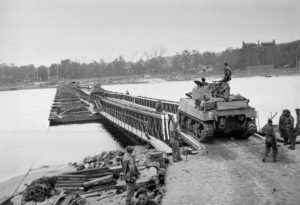 they were heading into the advancing American Army. The train halted at Farsleben…awaiting further orders. The engineers received their orders…drive the train to, and onto the bridge over the Elbe River, and either blow it up, or just drive it off the end of the damaged bridge, with all of the cars of the train crashing into the river, and killing or drowning all of the occupants. While the engineers thought about this action, knowing that they too would be hurtling themselves to death, the Americans caught up to them. The arrival of the 743rd Tank Battalion was the only reason anyone came out of the trains alive. It was Friday the 13th…a very blessed day for these Jews. Not an ounce of bad luck there.
they were heading into the advancing American Army. The train halted at Farsleben…awaiting further orders. The engineers received their orders…drive the train to, and onto the bridge over the Elbe River, and either blow it up, or just drive it off the end of the damaged bridge, with all of the cars of the train crashing into the river, and killing or drowning all of the occupants. While the engineers thought about this action, knowing that they too would be hurtling themselves to death, the Americans caught up to them. The arrival of the 743rd Tank Battalion was the only reason anyone came out of the trains alive. It was Friday the 13th…a very blessed day for these Jews. Not an ounce of bad luck there.
 Years ago, my sister-in-law, Jennifer Parmely made the decision to get healthy and stay that way. She was never really at a place where she was very overweight or unhealthy, but she was done letting that sneak into her life, and it never did sneak up on her again. Jennifer was always a pretty healthy eater, and even more so these days. She is very vigilant in how she eats and how she cooks.
Years ago, my sister-in-law, Jennifer Parmely made the decision to get healthy and stay that way. She was never really at a place where she was very overweight or unhealthy, but she was done letting that sneak into her life, and it never did sneak up on her again. Jennifer was always a pretty healthy eater, and even more so these days. She is very vigilant in how she eats and how she cooks.
Of course, eating well is not going to be enough to keep a person healthy, because without exercise, the body deteriorates. I think most of us know that, but that doesn’t mean that everyone is faithful to exercise to keep their body in shape. Jennifer is the  exception to that rule over the long run, because she is always doing some form of exercise. She walks, jogs, rides a bicycle, skis, yoga, and many other forms of exercise. After having three boys, her waist is still probably the same 25 inches, or less, that it was before she had children. That is all due to Jennifer’s dedication to healthy living, and it has served her well all these years. She has been able to do whatever she wanted to do.
exception to that rule over the long run, because she is always doing some form of exercise. She walks, jogs, rides a bicycle, skis, yoga, and many other forms of exercise. After having three boys, her waist is still probably the same 25 inches, or less, that it was before she had children. That is all due to Jennifer’s dedication to healthy living, and it has served her well all these years. She has been able to do whatever she wanted to do.
Jennifer is a labor and delivery nurse, at Wyoming Medical Center, and I can’t tell you how many babies she has helped to deliver, but I can tell you that it could be in the thousands. So many mothers who were comforted through their baby’s birth. So many  babies she held in her arms in their first moments of life. Oh the miracles she has been blessed to see. It is beyond amazing, and I know that Jennifer feels very blessed to have been a part of it for so many years.
babies she held in her arms in their first moments of life. Oh the miracles she has been blessed to see. It is beyond amazing, and I know that Jennifer feels very blessed to have been a part of it for so many years.
These days, Jennifer has even better reasons to stay in good shape. She has three little grandchildren that love riding their bicycles to the park with their Oma. Reagan, Hattie, and Bowen Parmely love hanging out and having fun, and Jennifer feels very blessed to have these little ones in her life…and very blessed that she is in shape to really enjoy them and the rest of her life. Today in Jennifer’s birthday. Happy birthday Jennifer!! Keep on keeping on!! Have a great day!! We love you!!
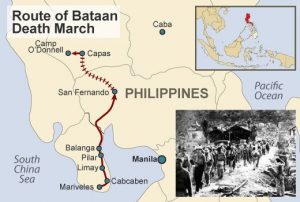 Following the attack on Pearl Harbor, the Japanese quickly began expanding their areas of control. They focused on the Philippine Islands, a United States territory, where tens of thousands of American and Filipino soldiers were stationed. The day after Japan bombed the US naval base at Pearl Harbor, on December 7, 1941, the Japanese invasion of the Philippines began. Without the necessary help from the US Navy, the troops stationed there quickly ran out of food and ammunition. On April 9, 1942, the soldiers had no choice but to surrender the Bataan Peninsula on the main Philippine island of Luzon to the Japanese. It was the largest army under US command ever to surrender.
Following the attack on Pearl Harbor, the Japanese quickly began expanding their areas of control. They focused on the Philippine Islands, a United States territory, where tens of thousands of American and Filipino soldiers were stationed. The day after Japan bombed the US naval base at Pearl Harbor, on December 7, 1941, the Japanese invasion of the Philippines began. Without the necessary help from the US Navy, the troops stationed there quickly ran out of food and ammunition. On April 9, 1942, the soldiers had no choice but to surrender the Bataan Peninsula on the main Philippine island of Luzon to the Japanese. It was the largest army under US command ever to surrender.
The Japanese didn’t want these prisoners of war to be visible, so a plan was devised to move them inland. The area didn’t have railways, and because they did not expect such a large group of surrendered soldiers, it was decided that they would walk the 65 miles. So, on April 9, 1942, 75,000 Filipino and American troops on Bataan were forced to make the torturous 65 mile march to Camp O’Donnell where they were to be housed. Japan was 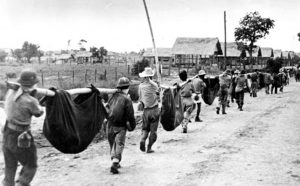 completely unprepared for the sheer number of soldiers who surrendered that day. The Japanese troops were filled with frustration, coupled with disdain for surrendering troops, which led to shocking brutality during the march.
completely unprepared for the sheer number of soldiers who surrendered that day. The Japanese troops were filled with frustration, coupled with disdain for surrendering troops, which led to shocking brutality during the march.
The marchers made the trek in intense heat that further complicated their situation, along with the harsh treatment by the Japanese guards. Thousands of men died along the way, in what became known as the Bataan Death March. The march began at Mariveles, on the southern end of the Bataan Peninsula. It continued 65 miles to San Fernando. The men were divided into groups of approximately 100, and the march typically took each group around five days to complete. While no one knows for sure, it is believed that thousands of troops died because of the brutality of their captors, who starved and beat the marchers, giving them no food or water, and bayoneted those too weak to walk. Those who survived were taken by rail from San Fernando to prisoner-of-war camps, where thousands died from disease, mistreatment, and starvation.
 America was pulled into World War II after the attack on Pearl Harbor, and would later avenged its defeat in the Philippines with the invasion of the island of Leyte in October 1944. General Douglas MacArthur, who in 1942 had famously promised to return to the Philippines, made good on his word. In February 1945, US-Filipino forces recaptured the Bataan Peninsula, and Manila was liberated in early March. After the war, an American military tribunal tried Lieutenant General Homma Masaharu, commander of the Japanese invasion forces in the Philippines. He was held responsible for the death march, a war crime, and was executed by firing squad on April 3, 1946.
America was pulled into World War II after the attack on Pearl Harbor, and would later avenged its defeat in the Philippines with the invasion of the island of Leyte in October 1944. General Douglas MacArthur, who in 1942 had famously promised to return to the Philippines, made good on his word. In February 1945, US-Filipino forces recaptured the Bataan Peninsula, and Manila was liberated in early March. After the war, an American military tribunal tried Lieutenant General Homma Masaharu, commander of the Japanese invasion forces in the Philippines. He was held responsible for the death march, a war crime, and was executed by firing squad on April 3, 1946.

